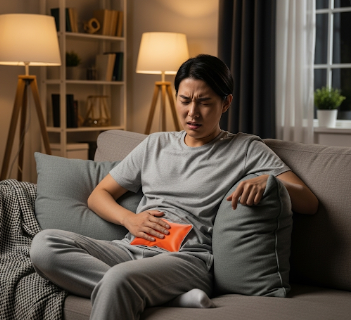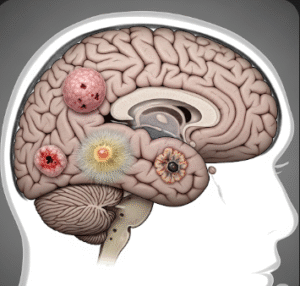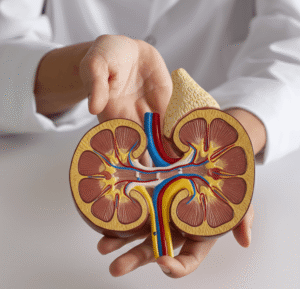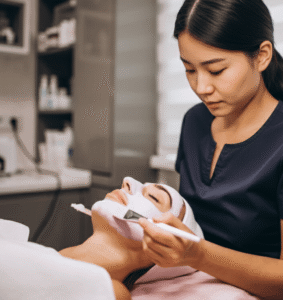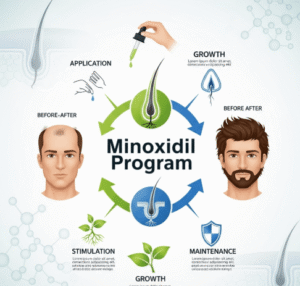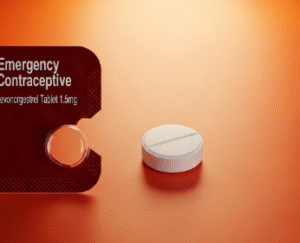Overview
Period pain, also called dysmenorrhea, is cramping and discomfort in the lower abdomen and pelvis that occurs before or during menstruation. It is one of the most common gynecological complaints among women of reproductive age. Pain can range from mild and manageable to severe and debilitating, sometimes interfering with daily activities, work, or school.
Period pain is not a disease itself but a symptom of underlying menstrual or reproductive health issues, including hormonal imbalances, endometriosis, fibroids, or pelvic inflammatory disease (PID). In Korea, advanced gynecology clinics and women’s health centers provide comprehensive care, including diagnostics, medical treatments, minimally invasive procedures, and pain management programs.
➤ Cramping, throbbing, or aching in the lower abdomen and pelvis
➤ Can interfere with daily activities or quality of life
➤ Early evaluation helps identify underlying causes and improves management
Key Facts
➤ Period pain can be primary or secondary.
➤ Primary dysmenorrhea: Pain without underlying pathology, often hormonal.
➤ Secondary dysmenorrhea: Pain due to reproductive health conditions like endometriosis or fibroids.
➤ Common symptoms include cramps, lower back pain, nausea, bloating, and fatigue.
➤ Korean hospitals provide ultrasound, MRI, and laboratory tests to determine the cause.
➤ Early intervention can reduce severity, improve quality of life, and prevent complications.
What is Period Pain?
Period pain refers to recurrent cramping or aching in the lower abdomen or pelvis associated with menstruation. It is caused by uterine contractions triggered by prostaglandins, hormone-like substances that regulate the menstrual cycle.
Types of period pain include:
➤ Primary Dysmenorrhea:
➤ Usually begins a few hours before or at the start of menstruation.
➤ Typically lasts 2–3 days and diminishes with age or after childbirth.
➤ Secondary Dysmenorrhea:
➤ Associated with underlying conditions such as endometriosis, fibroids, adenomyosis, or pelvic infections.
➤ Pain may start earlier, last longer, and worsen over time.
➤ Referred Pain:
➤ Pain may radiate to the lower back, thighs, or legs.
➤ May include associated gastrointestinal symptoms such as nausea or diarrhea.
What Symptoms Are Related To
Period pain is often accompanied by a range of related symptoms:
➤ Cramps or aching in the lower abdomen.
➤ Lower back or hip pain.
➤ Nausea, vomiting, or diarrhea.
➤ Headaches or migraines.
➤ Fatigue or weakness.
➤ Bloating or breast tenderness.
➤ Irritability, mood swings, or difficulty concentrating.
➤ Heavy menstrual bleeding in cases of secondary dysmenorrhea.
What Causes / Possible Causes
Period pain arises from a variety of hormonal, structural, and medical conditions:
➤ Primary Dysmenorrhea
➤ High levels of prostaglandins cause strong uterine contractions, leading to cramping.
➤ Often more severe in younger women or during first few menstrual cycles.
➤ Secondary Dysmenorrhea
➤ Endometriosis: Growth of uterine tissue outside the uterus causing inflammation and pain.
➤ Fibroids: Benign uterine tumors causing pressure and heavy bleeding.
➤ Adenomyosis: Thickening of the uterine lining within the uterine wall.
➤ Pelvic Inflammatory Disease (PID): Infection of reproductive organs leading to pain and fever.
➤ Ovarian cysts or torsion: May cause localized severe pain.
➤ Lifestyle and Risk Factors
➤ Smoking, high stress, obesity, or lack of physical activity can worsen period pain.
When Should I See My Doctor
Consult a healthcare professional if:
➤ Pain is severe, persistent, or interferes with daily life.
➤ Symptoms worsen over time or differ from previous cycles.
➤ Associated with heavy bleeding, irregular periods, or clot formation.
➤ Pain is accompanied by fever, foul-smelling discharge, or signs of infection.
➤ Suspected underlying conditions like endometriosis, fibroids, or PID.
Early evaluation ensures appropriate diagnosis, timely treatment, and improved quality of life.
Care and Treatment
Treatment depends on the severity and underlying cause:
➤ Lifestyle Measures and Self-Care
➤ Regular exercise to improve circulation and reduce cramps.
➤ Heat therapy using hot water bottles or heating pads.
➤ Dietary modifications: reduce caffeine, salt, and sugar intake.
➤ Stress management and relaxation techniques.
➤ Medical Management
➤ NSAIDs (e.g., ibuprofen, naproxen) to reduce pain and inflammation.
➤ Hormonal therapy: birth control pills, patches, or IUDs to regulate periods.
➤ Medications for nausea, headaches, or diarrhea as needed.
➤ Surgical or Advanced Treatments
➤ Laparoscopic surgery for endometriosis or fibroids.
➤ Hysterectomy in severe, refractory cases of secondary dysmenorrhea.
➤ Complementary Therapies
➤ Acupuncture, yoga, or physical therapy for pain management and relaxation.
Treatment Options in Korea
Korea offers comprehensive gynecological care for period pain:
➤ Top Hospitals for Women’s Health
➤ Asan Medical Center (Seoul): Advanced diagnostics, minimally invasive surgeries, and hormonal management.
➤ Samsung Medical Center: Endometriosis and fibroid treatment, laparoscopic surgery, and pain management.
➤ Seoul National University Hospital (SNUH): Multidisciplinary gynecology care, reproductive health, and minimally invasive interventions.
➤ Yonsei Severance Hospital: Comprehensive care for menstrual disorders and pelvic pain, including rehabilitation and counseling.
➤ Advanced Diagnostic Tools
➤ Pelvic ultrasound and MRI for uterine, ovarian, and pelvic assessment.
➤ Hormonal panels to detect imbalances.
➤ Laparoscopy for diagnosing endometriosis or internal pelvic conditions.
➤ Modern Interventions
➤ Minimally invasive laparoscopic surgery for fibroids, endometriosis, or cysts.
➤ Hormonal therapy including oral contraceptives or IUDs.
➤ Pain management programs including medications, physiotherapy, and complementary therapies.

